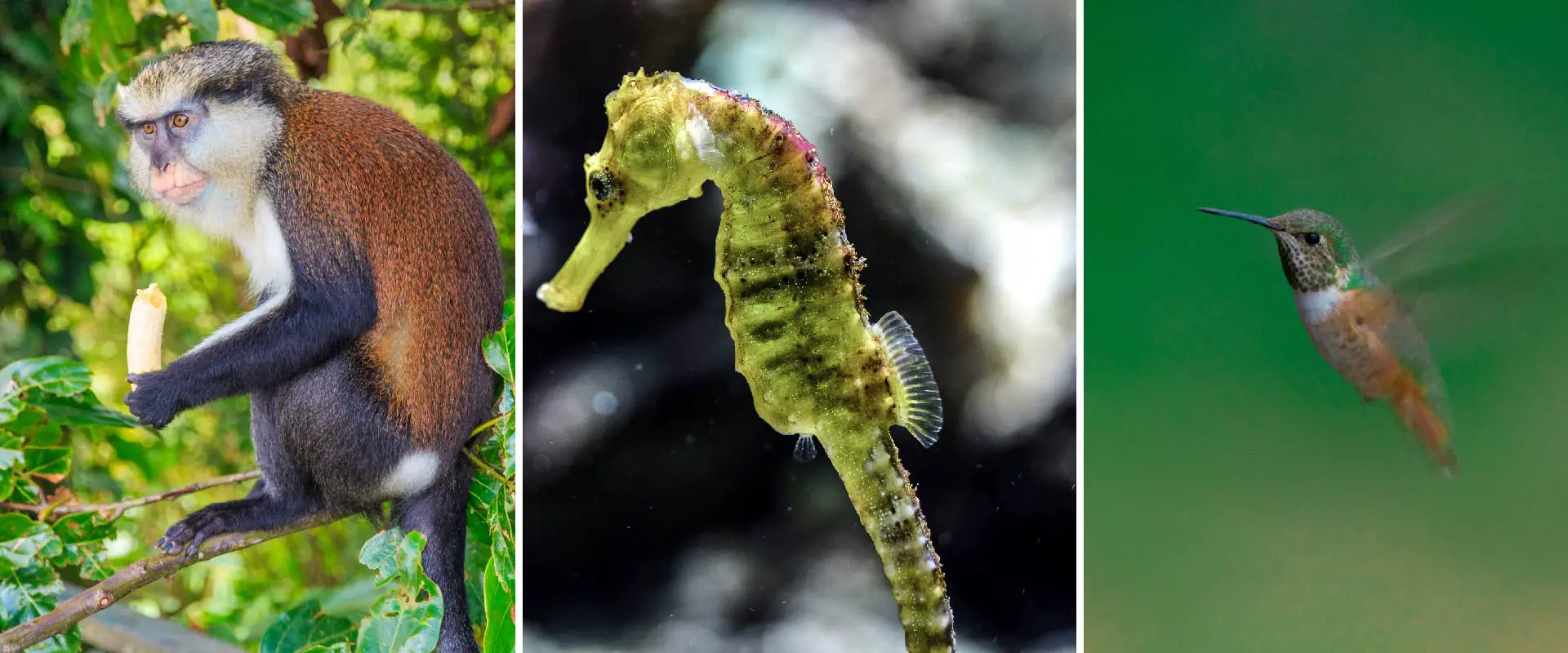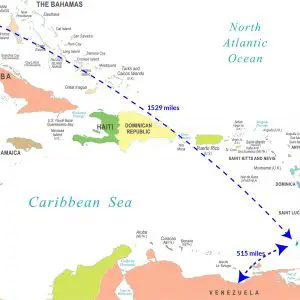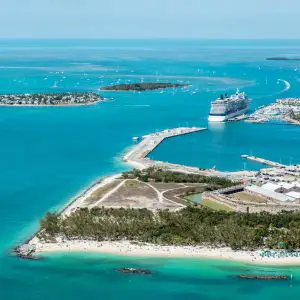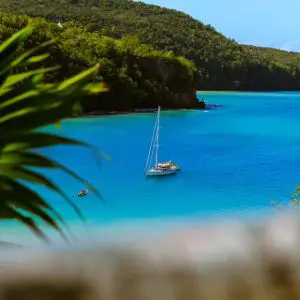Situated in the southern Caribbean, Grenada is a small island country comprised of one main island and surrounding smaller islands. While many will visit the country for the beautiful weather and pristine beaches, Grenada has plenty to offer in the way of wildlife and sea life.
For those looking to visit Grenada for the wildlife and sea life, you’re in luck! With several natural parks and wildlife sanctuaries, visitors have plenty to choose from. With one of the more progressive stances towards environmentalism, the Grenadine government actively works to protect and promote its natural beauty, wildlife, and sea life included.
Packed with wildlife ranging from bats and tropical birds to snakes, lizards, and mongoose, Grenada has something for everyone. Use this guide to help you learn more about the country’s wildlife and sealife and where to find them.
Grenada’s Wildlife – What You Can Expect
With Grenada being in the Caribbean and featuring a tropical climate, the wildlife on the islands has all the diversity that comes with it. While the islands are all small, the diversity of their wildlife is far from lacking.
Starting with the mountainous interior of the main island, Grenada, visitors will find a plethora of rainforest inhabitants, including reptiles, mammals, and the typically robust population of tropical birds that one expects to find in tropical rainforests.
Mammals of Grenada
Grenada is home to several mammals, including two native species of marsupials. All unique to the Americas, these marsupials can be found on each of the islands that make up the country of Grenada, though spotting them can be a bit trickier – they’re a bit camera-shy!
By the way, did you know Grenada includes over 20 islands? There are three main islands – Grenada, Carriacou, and Petit Martinique – and 17 more small islands and cays. Check out this article and add visiting one of the tiny islands to your bucket list: Number of Islands in Grenada (Including the Tiny Ones)
Some of the mammals you will find in Grenada include:
- Lesser Chapman’s Murine Opossums, or mouse opossums
- Greater Chapman’s Murine Opossums, or manicous
- Nine-Banded Armadillos
- Mongoose
- African Mona Monkeys
Grenada is home to two distinct types of opossums. The Lesser Chapman’s Murine Opossum, also known as the mouse opossum, is a strictly nocturnal marsupial with a prehensile tail that it uses for climbing. Being a marsupial means this type of mammal gives birth to live young like other mammals but carries them in a pouch until they are old enough to fend for themselves.
Mouse opossums are found exclusively in the tropics of Central and Northern South America, including some islands of the Caribbean. Living primarily in the trees, they use their tails to help them climb from branch to branch as they feed on fruit and insects.
The Greater Chapman’s Murine Opossum, or manicou, is a larger version of its cousin. Also, nocturnal, the Greater Chapman’s Opossum will also feed on eggs and small birds when given the opportunity. Hunted for its meat, it’s speculated that this species was originally q by Amerindians as they island-hopped.
Another small mammal native to Grenada is the Nine-Banded Armadillo. The armadillo is more reclusive than the two varieties of opossum, and their numbers have also been greatly reduced by heavy pressure from hunting.
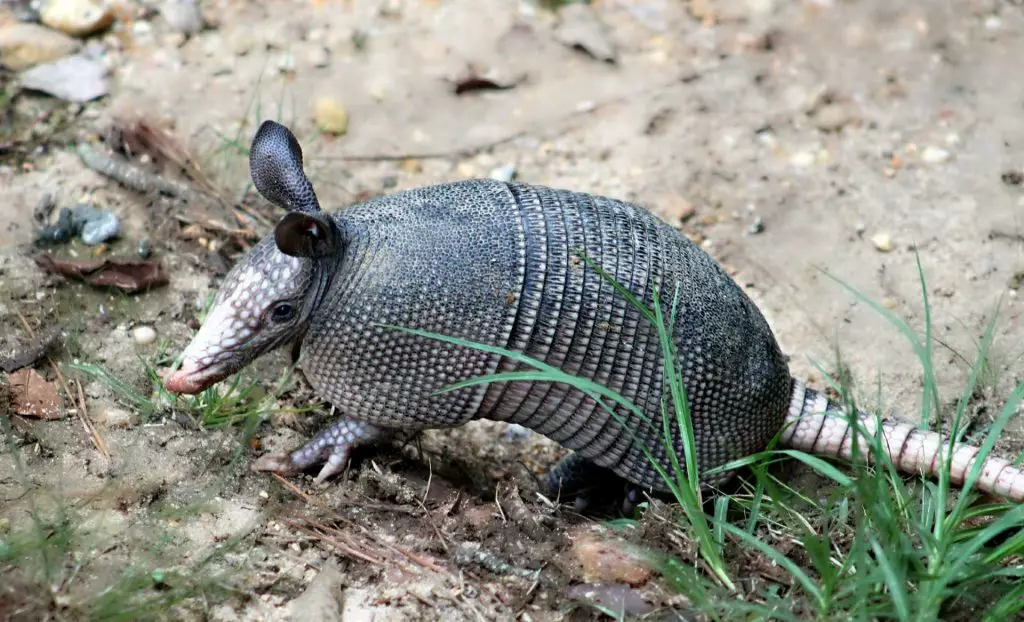
Image by Cheryl Holt from Pixabay
With heavy armored plates over their shoulders and rear, the armadillo gets its name from the nine bands of armored plates that connect the shoulders and rear. These plates are used for protection from predators but also make them prized by poachers.
Armadillos are prolific diggers, using their skill to make burrows to live in and when searching for food. They’re known to eat insects and invertebrates, as well as the occasional bird egg. Their burrows often create habitats for other varieties of animals as armadillos abandon them.
An interesting fact about the nine-banded armadillo is that females give birth to sets of identical quadruplets that all develop from the same egg.
Within Grenada, the nine-banded armadillo population is primarily confined to the Grand Etang Forest and the Mount St. Catherine Forest.
Another common mammal found in Grenada is the Mongoose. Introduced in the 1880s as a way of controlling the rat and snake populations in agricultural areas, the mongoose has thrived on the island without any serious predatory threats.

Image by mordilla-net from Pixabay
Mongooses are generalist feeders, preying on rodents, snakes, small reptiles, and other ground animals, including birds. Without any strong predatory threat and with native species unable to develop anti-predator tactics, the mongoose population has in some ways gotten out of control.
Small in size, the mongoose is an adaptable species with a high rate of reproduction, which helped it to quickly spread across the islands of Grenada. Living in hollow logs and trees, ground dens, and rock crevices, mongooses thrive in several different habitats, so it is likely that you’ll see plenty during a visit to Grenada.
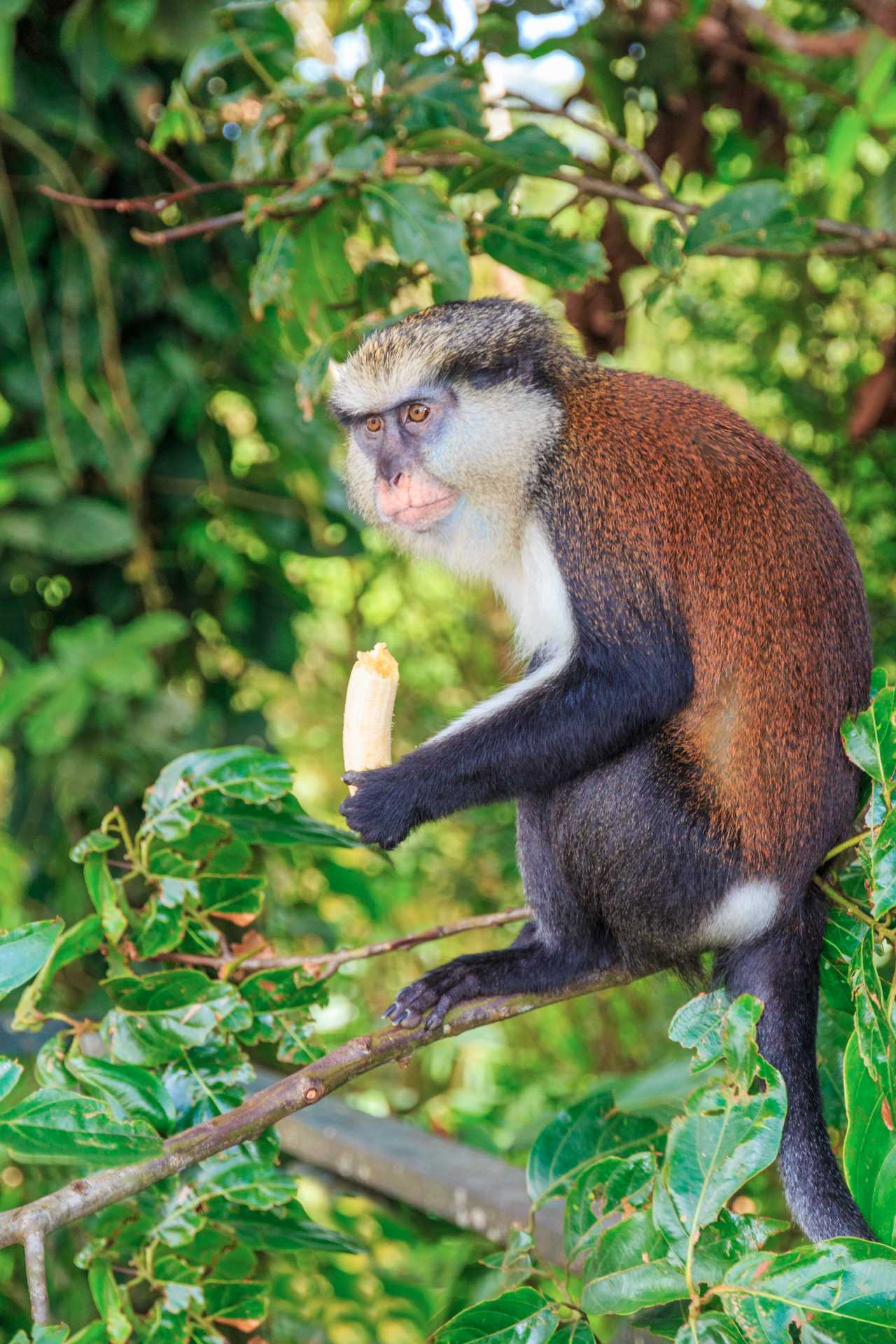
Grenada is also home to a species of monkey, the African Mona Monkey. Likely introduced to islands from West Africa during the slave trade, the monkeys have since become a stable population living in the woodland rainforests of the islands.
Reaching around one to two feet in length, they feature a tail of almost three feet in length that helps them navigate in the treetops. They tend to live in groups ranging from five to twenty individuals, usually led by a dominant male.
In 1955, Hurricane Janet hit the island and nearly eliminated the population, but it has since reached stable levels. While preferring the forests, mona monkeys are sometimes known to come into agricultural areas to raid for food. You can find these monkeys in the Grand Etang Forests and the St. Catherine Upper Montane Forest.
Additionally, you’ll see several feral goats, donkeys, and cattle when visiting Grenada.
Bats of Grenada
As a tropical island, Grenada is home to a few species of bats, including both fruit-eating and insect-eating varieties.
Some of the bats you will find on the Grenadine Islands are:
- fish-eating bats
- long-tongued bats
- Jamaican fruit-eating bats
- leaf-nosed bats
One species you might encounter is the fish-eating bat, a species found in the warmer climates of Central America. One of the largest types of bats of the genus Myotis, the fish-eating bat, gets its name from its diet of fish and crustaceans.
Another bat species found in Grenada is the long-tongued bat. Smaller than the fish-eating bat, the long-tongued bat features a body of only about two inches in length. This species tends to live in colonies of up to 20 individuals and prefers to live in shallow caves where complete darkness is never quite reached.
The long-tongued bat sustains itself on a diet of pollen, fruit, and nectar, using its tongue of nearly 3 inches to reach the nectar. This species also has an interdependent relationship with the columnar cacti, meaning neither could exist without the other. This process also helps to provide food for other species when the plant flowers and drops fruit.
The Jamaican fruit-eating bat is another common species of bat found in Grenada. As the name suggests, these bats live on fruit found commonly in rainforests. They also eat the pulpy layer that surrounds tree nuts, helping to disperse the tree’s seeds when they carry off the fruit to eat the pulp.
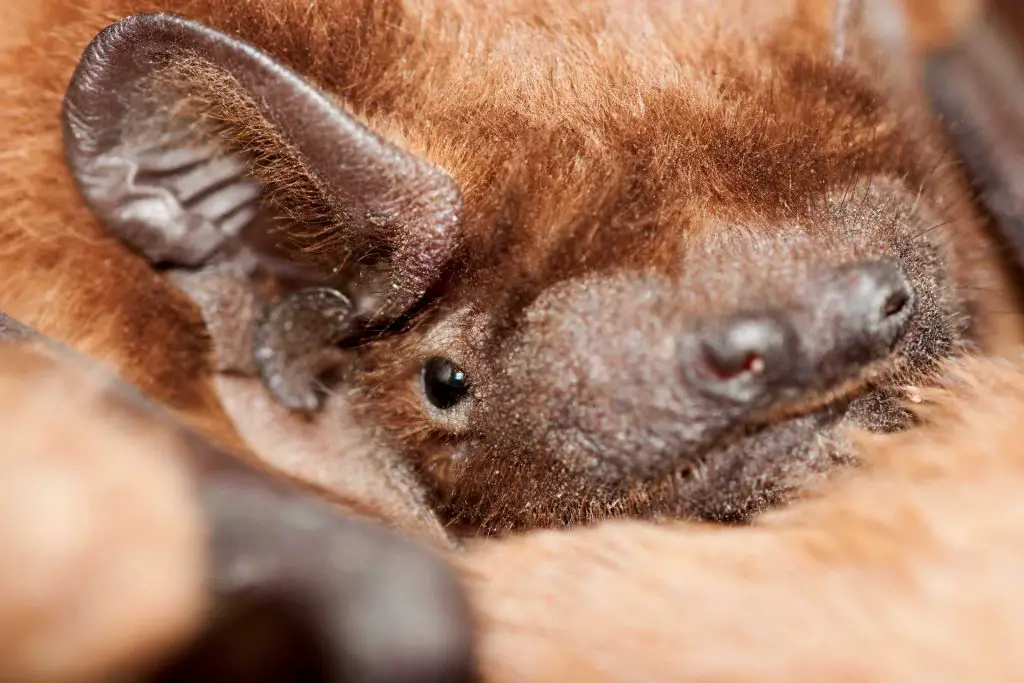
Larger than the long-tongued bat, the fruit bat will roost in small clusters of individuals, using a wide range of habitats for roosts, including caves, overhangs, hollows, and even man-made structures like bridges and buildings.
The leaf-nosed bat is another species you can find while visiting Grenada. Found in both moist evergreen and dry deciduous forests, the leaf-nosed bat feeds mostly on fruits and is an important disperser for many plants of Grenada. Roosting in colonies of ten to a hundred individuals, the leaf-nosed bat will go into a form of hibernation during times of food scarcity.
Reptiles of Grenada
As with most tropical locations, Grenada features several species of reptiles that populate all parts of the islands.
Some of the reptiles that you may encounter in Grenada include:
- iguanas
- brown anoles
- Carolina anoles, or green anoles
- common house geckos
- giant ameivas
- burrowing snakes
- tree boas
- Grenadian bank tree boas
- red-legged tortoises
One of the most common reptiles, both in Grenada and in other warm parts of the Americas, is the iguana. The largest of Grenada’s lizards, iguanas are typically tree dwellers but can frequently be found on the ground.
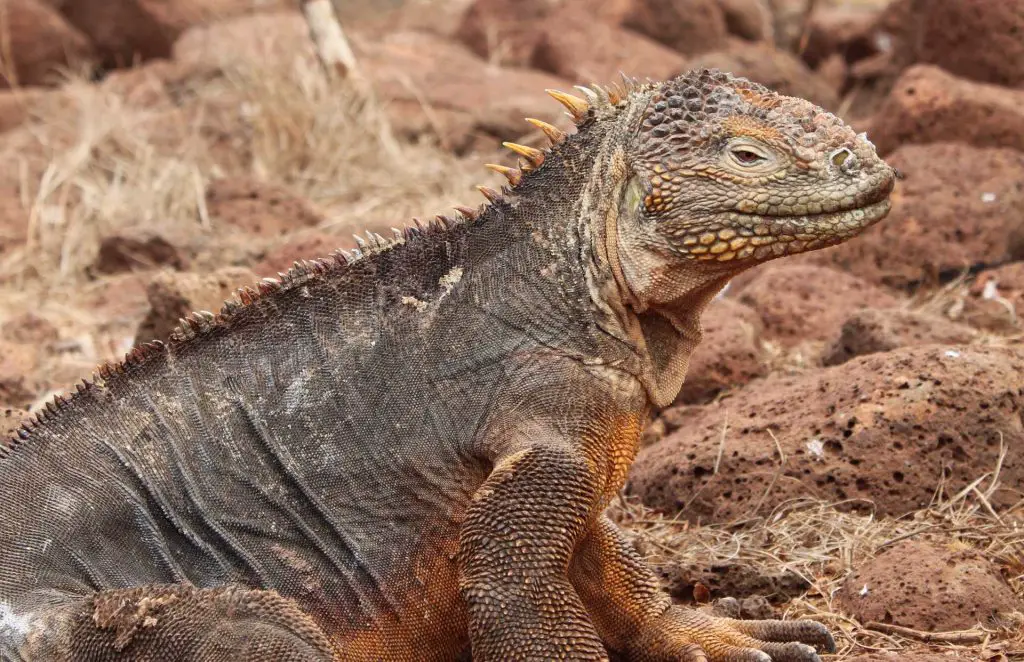
Photo by Laëtitia Buscaylet on Unsplash
Iguanas can grow to be six feet in length, including their strong whip-like tail, and are primarily green with either brown or black markings. They feature a crest of spikes that run down their necks giving them the look of prehistoric creatures. Excellent swimmers, iguanas primarily feed on leaves, shoots, and fruit.
Another species of lizard found in Grenada is the brown anole. Not originally from the Grenadines, the brown anole has built up a large population on the islands and has pushed other lizard species into altering their behavior and habitat.
Larger than their anole relatives, the brown anole can grow to eight inches in length and can primarily be found at night while hunting near a light source. When captured, the species releases a low squeaking croak.
Another species of lizard found in Grenada is the Carolina anole or green anole. They are a relative of the brown anole. Medium-sized with a slender body and pointed snout, the Carolina anole comes in various shades of both brown and green. Green anoles are active during the day and tend to feed primarily on insects like grasshoppers and crickets.
Visitors to Grenada will also likely encounter the common house gecko. These lizards have learned to live alongside humans in developed areas. Sleeping and hiding during the day, these lizards come out at night to feed near light sources that attract insects. Depending on where you’re staying, you might see one skittering across your hotel’s wall!
Another lizard you might encounter in Grenada is the giant ameiva. Growing up to twenty inches in length, these lizards are primarily ground dwellers who search the forest floor for food and cover. The males of this species feature a striking green coloration on their back half, but the females do not. The giant ameiva primarily feeds on insects, spiders, and frogs.
Grenada is also home to several species of snakes, including a few that are native to the Grenadines. One of these is the Grenda Bank Blindsnake. It’s a rare type of blind snake found in Grenada. Feeding mostly on insects, the snake can be found in moist areas at low elevations.
Another native snake species is the Grenada Bank Tree Boa. Nocturnal, the tree boa can be found throughout the various types of forests you’ll encounter in Grenada. While it’s a common species on the island, their coloration and appearance vary drastically from location to location because they develop camouflage best suited to their environment. These snakes feed primarily on small mammals and reptiles.
Also living on the islands of Grenada is the red-legged tortoise. A slow-moving, land-dwelling relative of the turtle, red-legged tortoises can live incredibly long lives.
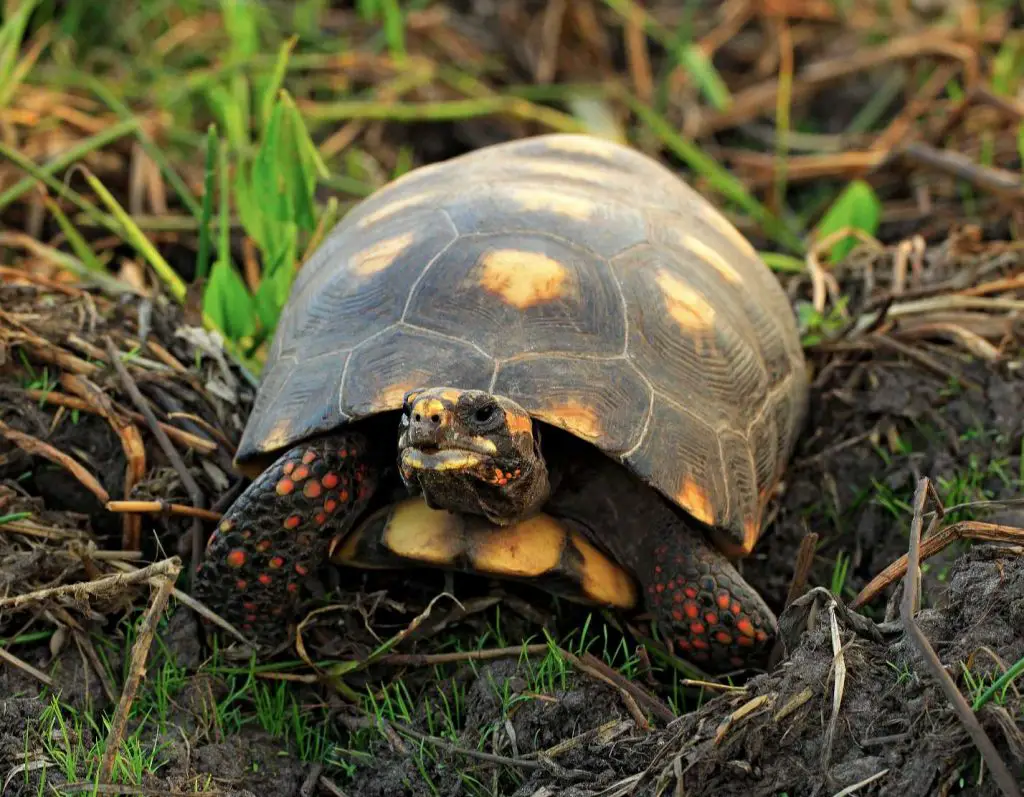
They’re highly social animals and have excellent memories. If you’re lucky enough to see one enjoying the sun’s rays, you’ll likely be able to enjoy a rather close encounter.
By the way, if Grenada is on your list of vacation destinations – check out First Time Visitor’s Guide to Grenada so you’re fully prepared when the time comes.
Amphibians of Grenada
Grenada is also home to a handful of notable species of amphibians.
Some amphibians of the Grenadine Islands include:
- Cane (giant) toads
- piping frogs
- highland piping frogs
The first and most common amphibian is the cane toad, commonly referred to as a giant toad. Introduced to control insect populations in agricultural areas, the giant toad has thrived in Grenada. Reaching lengths of up to six inches, the giant toad looks like your typical toad – brown with varying spots and shades and warty.
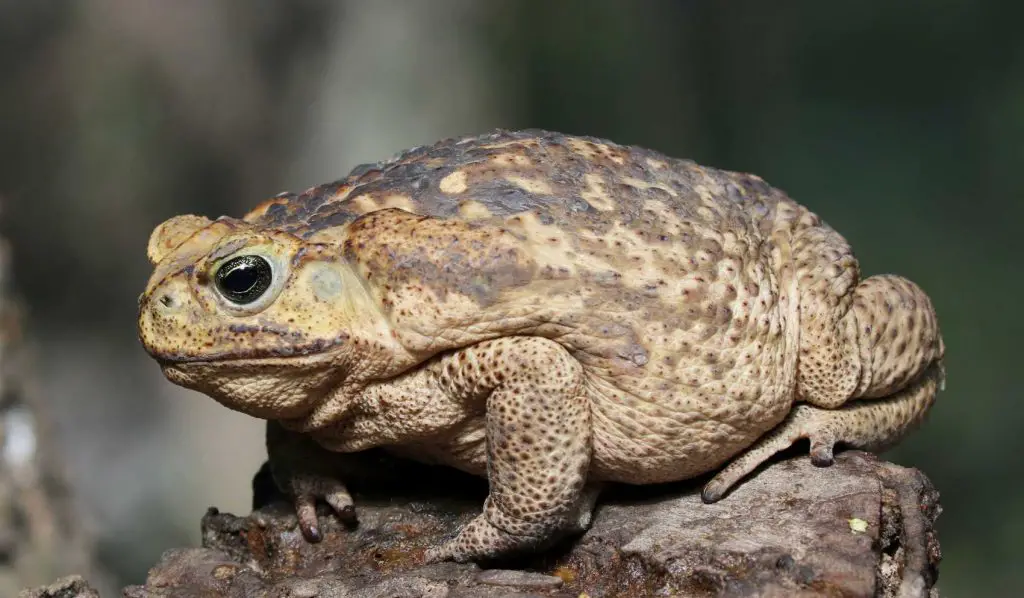
Another species of amphibian you’ll find in Grenada is the piping frog. Found in small numbers and confined to the Grand Etang Forest and Mount St. Catherine, this small brownish frog lives among the trees in these forests. A vocal species of frog, the piping frog gets its name from the whistling noise it makes when the temperatures go above 70 degrees Fahrenheit.
Also, in Grenada, you can find the piping frog’s cousin, the highland piping frog. Similar in appearance to the piping frog, the highland piping frog is found in wooded areas at higher elevations. The highland piping frog is also not as vocal as its cousin.
Birds of Grenada
Situated as it is in the island chain of the Caribbean, Grenada plays home to a wide variety of migrating birds that bounce from island to island to feed and mate. The island also features several land-based species of birds, as well as seven species of the Lesser Antilles endemic species.
Some bird species you can find on these beautiful islands include:
- Grenada flycatchers
- Lesser Antillean Tanagers
- Lesser Antillean Bullfinches
- Grenada Hook-billed kites
- Red-footed boobies
- Antillean crested hummingbirds
- Purple-throated Caribs
- Rufous-breasted hermits
- Grenada doves
One of these endemic species is the Grenada flycatcher. A larger species of flycatcher, the Grenada flycatcher, can only be found on the islands of Grenada and St. Vincent. Living in the dry forest areas of the islands, the Grenada flycatcher is most active during the day. As the name implies, the Grenada flycatcher sustains itself on a diet of insects.
Another bird native to the Grenadines is the Lesser Antillean Tanager. Known to be a highly colorful type of bird, tanagers are commonly found throughout the tropics. The Lesser Antillean Tanager is no different, preferring the subtropical rainforests and lowlands of the Grenadines and St. Vincent. This variety of tanager features a tawny, greyish plumage with a deep green coloration on the wings.
Another bird you will see in the Grenadines and surrounding islands is the Lesser Antillean Bullfinch. Limited to the southern Caribbean, the Lesser Antillean Bullfinch thrives in the forests found on the islands. The bullfinch is medium-sized and features a grey coloration, with the males displaying a red throat patch.
Another of Grenada’s endemic birds you might encounter during a visit to the islands is the Grenada Hook-billed kite. A member of the raptor family, the hook-billed kite can be found in both the Caribbean and throughout Central America. Mid-sized with a slender build, the hook-billed kite features a grey coloration with striping across its midsection. Its diet features a mix of tree snails, small reptiles, frogs, small mammals, and insects.
Grenada and the surrounding areas play an important role for migratory and sea-faring birds as waypoints for them to rest and refuel. One such species that can be found in the Grenadines is the red-footed booby. A large seabird, the red-footed booby is a white bird with black wingtips. As you might have guessed, it also has bright red feet.
The red-footed booby uses the Grenadines and surrounding islands as an important breeding ground, using the smaller, uninhabited islands to nest and raise their young.
Grenada is also home to a number of hummingbirds, all of which are beautiful in their own ways. The Antillean crested hummingbird is a deep green hummingbird with a distinct crest of feathers atop its head.
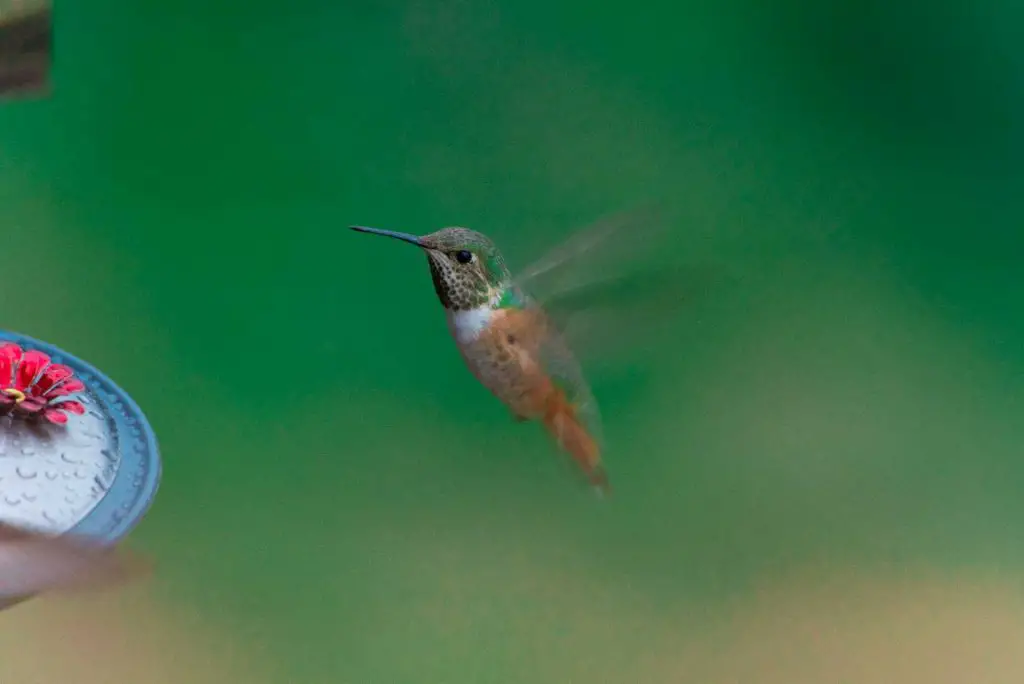
Photo by Nathan Anderson on Unsplash
The purple-throated Carib is another hummingbird you might encounter while visiting Grenada. Darker in color, they feature a bright bluish-green coloration in their wings and a deep purple patch on their throat.
Another common hummingbird species that can be found in Grenada is the rufous-breasted hermit. Living near the forest floor, the rufous-breasted hermit features a greenish back with a tawny throat and belly.
For those visiting Grenada to view the wildlife, there’s one bird that is a must-see. The Grenada Dove is a species of dove endemic to the main island of Grenada and is listed as critically endangered. The national bird of Grenada, the Grenada dove, should be on any wildlife lover’s list when visiting Grenada.
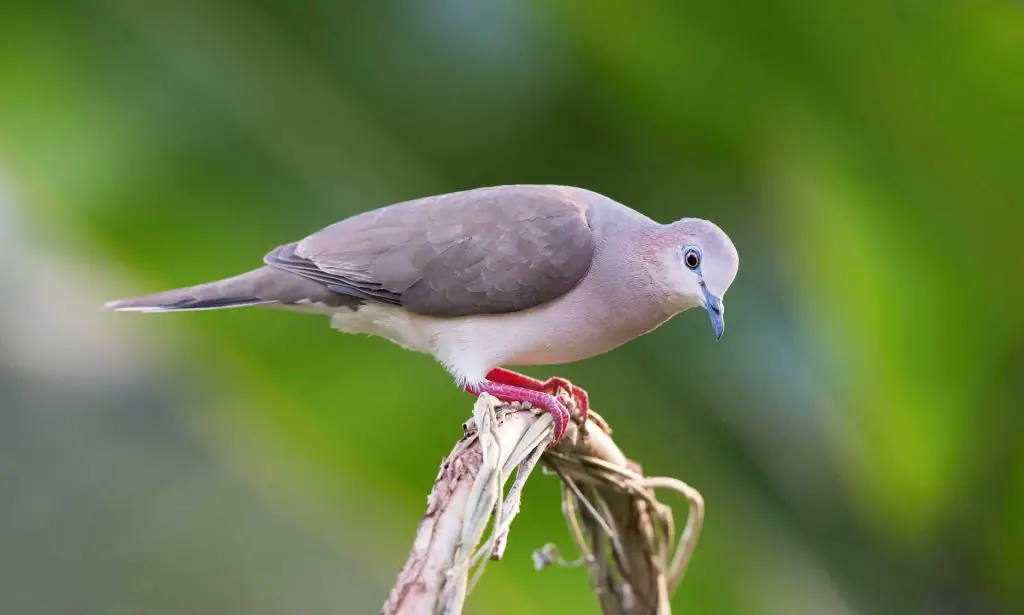
A medium-sized dove, the Grenada dove features an olive chest and midsection, shading into a pinkish-tan around the head. The Grenada dove has shown a decline in numbers recently, and they are generally confined to the Mount Hartman, Clark’s Court Bay, and Richmond Hill watersheds.
Several conservation efforts have been undertaken by the Grenada government in conjunction with international organizations. In 1996, the Grenada government set up two reserve zones to protect the dove’s habitat, one comprised of the Perseverance and Woodford Estates and one within the Mount Hartman Estate. Full accountings of the Grenada dove’s population numbers haven’t been done island-wide.
As with many endangered birds, the number one threat to the Grenada dove is believed to be habitat fragmentation. Additionally, predation may be another large threat to the Grenada dove, as both the native species of opossum and rats have been known to prey on the dove and their nests.
Any visit to the nation of Grenada for a wildlife lover should include a visit to one of these reserves to see the Grenada dove.
Sealife of Grenada
Because it is a tropical island, Grenada’s waters are filled with a vibrant array of sea life. From turtles and whales to dolphins and exotic fish, the waters surrounding the islands of Grenada have plenty to offer the wildlife lover.
Sealife that you can see while visiting Grenada includes:
- Sea turtles
- Whales
- Bottlenose, striped, common, and spotted dolphins
- Yellowtail snapper
- Bar jacks
- Spotted drums
- Frogfish
- Angelfish
- Horse eye jacks
- Seahorses
- Moray eels
- Spotted eagle rays
- Manta rays
- Sharks (yes, sharks!)
Sea turtles are known to visit the northern beaches of the islands in order to lay their eggs and can be seen in the waters surrounding these beaches. A variety of different species of sea turtles can be seen here, including leatherbacks, hawksbills, green turtles, and the somewhat rare loggerhead turtle.
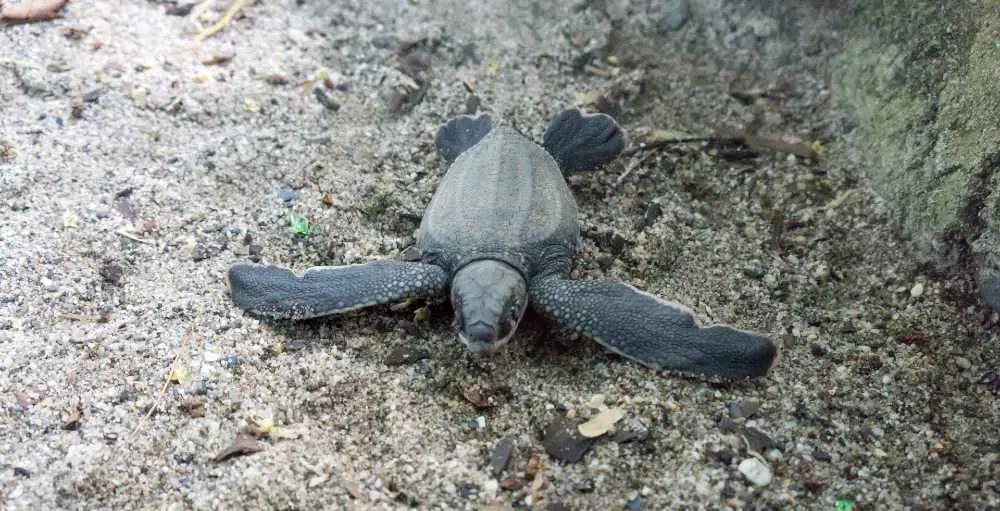
Whales can also be seen in the water around Grenada. During the months of December and April, in particular, the waters are visited by several species of whale as they migrate up and down the Atlantic following their food sources. These species include Orcas, Curvier´s beaked, Humpbacks, and Sperm Whales.
Additionally, the waters around Grenada feature several species of whales year-round. These species include pilot, Bryde’s, sperm, pygmy, and sei whales. A visit to Grenada, no matter what time of year, will likely produce some whale sightings.
The waters of Grenada and the southern Caribbean also feature several species of dolphins and porpoises. Recognizable anywhere, the bottlenose dolphin can be found around Grenada. They travel in groups ranging from 2 to 25, and sightings can be quite common when in the waters around the islands.
Another variety of dolphins that can be found around Grenada is the striped Dolphin. Though less common than the bottlenose, striped dolphin sightings can be common as they travel in large schools of up to 100 individuals. Reaching 6 to 8 feet in length, striped dolphins feed on the fish that inhabit the waters around the islands.
Common dolphins and spotted dolphins can also be seen around Grenada. The common dolphin lives in large groups and can reach 8 feet in length. Though they prefer deeper waters, they can sometimes be seen closer to shore searching for food. Spotted dolphins are on the smaller side, reaching a max of 7 feet, and tend to live in smaller groups than the striped or common dolphin.
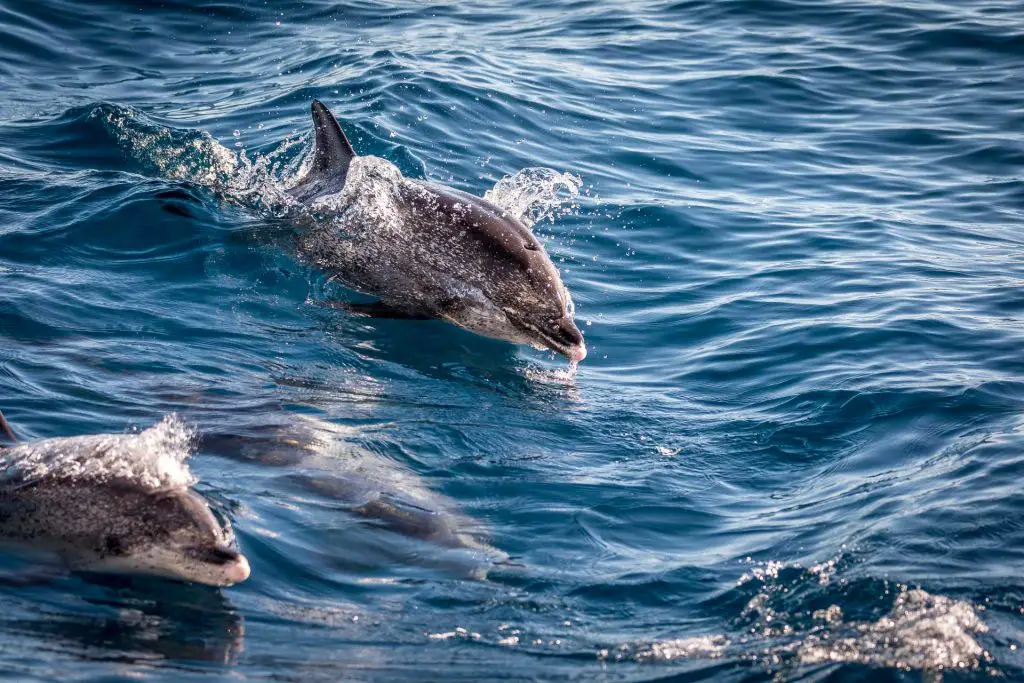
Being located in the warm waters of the southern Caribbean, Grenada, and its surrounding islands make for common snorkeling locations. As with all the marquee snorkeling locations of the Caribbean, visitors to Grenada will be treated to a colorful array of shallow-water fish that live around the islands.
Among the shallows of the islands, you’ll find many of the usual Caribbean suspects, including yellowtail snapper, bar jacks, spotted drums, and frogfish. All these fish live in the shallow water around the islands. The waters around Grenada contain a vibrant and robust ecosystem. Visitors will be able to see these fish within that ecosystem.
Angelfish are a variety of fish that can commonly be seen by snorkelers around Grenada. Smaller than most other fish, angelfish features a distinct and beautiful coloration. Horse eye jacks are another common gamefish found around the islands of Grenada. These fish are also harvested commercially and tend to live in large schools throughout the Caribbean.
Visitors can also find other species of fish that you might expect to see in aquariums. One of these is the seahorse. Incredibly unique as a fish, seahorses lived among the reefs and cover that can be found off the coast of the Grenadine islands.

Image by Sophia Hilmar from Pixabay
Moray Eels can also be found around the Grenadines. A rather scary-looking species of fish, moray eels live in secluded areas and crevices amongst the reef. Lurking from their hiding spot, eels prey on the various fish that might find themselves unlucky enough to swim too close.
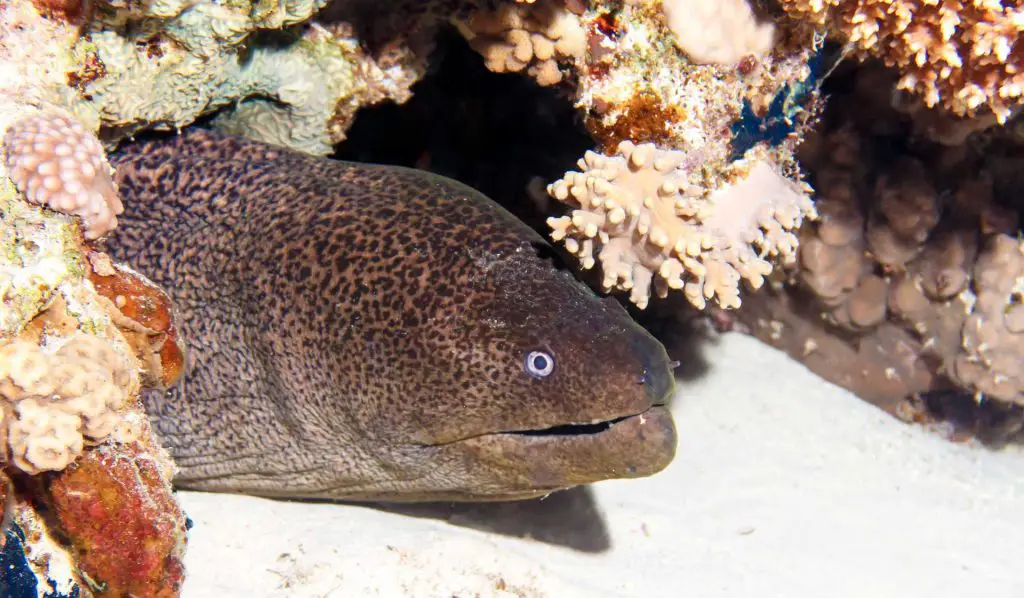
Two varieties of rays can be found around the Grenadines. Spotted eagle rays, the smaller and lesser-known variety can be found in the waters surrounding Grenada, both feeding around the islands and breeding in their waters. Additionally, the Manta Ray can also be found in the waters around Grenada. Reaching an average width of 22 feet, you can’t miss a manta ray when it passes!
Are there sharks in the waters around Grenada? Who wouldn’t want to know the answer to THAT question? Spoiler alert – yes of course! Grenada is smack dab in the middle of the Caribbean Sea and sharks can be found in sea and ocean water. Check out this article to find what kind of sharks are in the waters around Grenada and the likelihood of spotting one – even if you’re scuba diving! Are There Sharks in the Waters Around Grenada?
Conclusion
If you are looking to see amazing displays of nature in wildlife and sea life, a visit to Grenada should be on your bucket list. With so many different animals and such a gorgeous landscape to find them in, your visit will surely be one that you will remember for a lifetime.
My Favorite Tour Company to see Grenada’s animals and Sea Life up close and personal
There’s nothing worse than getting to your vacation destination and wondering how to partake in all the activities that interest you. I love booking my tours with Get Your Guide. With Get Your Guide, you can book your tours in advance of your trip, so you don’t have to worry about them selling out. Here are more reasons I love Get Your Guide:
- Lowest prices guaranteed.
- No booking fees or hidden charges.
- Flexible with easy cancellation up to 24 hours before.
- Mobile-friendly payment and tickets for booking on the go
- Friendly and knowledgeable customer services, available 24/7 — in your language.
Here are some tours you are sure to spot some of Grenada’s amazing creatures. Take note of the tours that tend to sell out early. Happy Planning!
- 🏖️ Sand-Free Beach Towel: Enjoy a hassle-free beach experience with our Bay Laurel beach towel. Shake off the sand effortlessly and keep your beach bag clean and sand-free.
- ✈️ Lightweight and Travel-Friendly: Pack light and travel with ease! Our compact travel towel is perfect for vacations, camping trips, and backpacking adventures. It takes up minimal space in your bag, making it a convenient travel companion.✈️ Lightweight and Travel-Friendly: Pack light and travel with ease! Our compact travel towel is perfect for vacations, camping trips, and backpacking adventures. It takes up minimal space in your bag, making it a convenient travel companion.
- ⏱️ Quick-Dry Technology: Say goodbye to damp and musty towels. Our Bay Laurel towel features super quick-dry technology, allowing it to dry rapidly in any environment. No more unpleasant smells or uncomfortable dampness.
- 🌟 Versatile and Multipurpose: Experience the versatility of our beach towel. It serves as a beach blanket, Turkish towel, and camping essential. It’s also oversized, providing ample coverage for your comfort.
- 🌴 Premium Quality and Style: Our Bay Laurel beach towel is crafted with the highest quality materials, ensuring durability and long-lasting performance. With its stylish design, you’ll stand out on the beach while enjoying the ultimate relaxation experience.
As an Amazon Associate, we earn from qualifying purchases.
